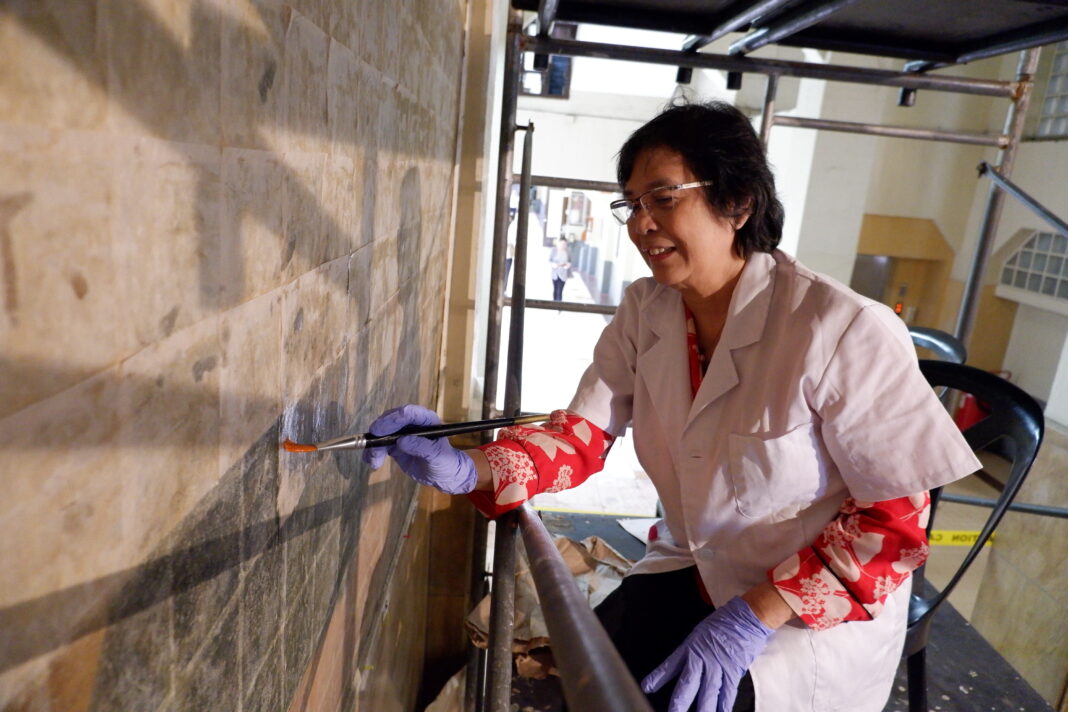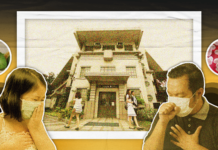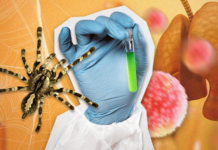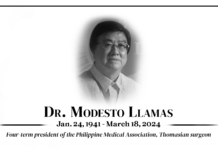ENHANCING an iconic artwork is a painstaking process that requires a sheer amount of delicateness and meticulousness.
Such is the laborious case of UST Museum’s chief conservator, Prof. Bernardita Maronilla-Reyes, who has been on a mission that began two years ago to conserve Antonio Garcia Llamas’s four-panel mural titled “History of University of Santo Tomas,” which was painted from 1952 to 1954, located at the Main Building.
The UST Museum is currently conserving the last panel, depicting “the commitment to Thomasian ideals.” It will take about eight months to complete the process.
In an interview with the Varsitarian, Reyes, a chemist by practice, said for panel three – the recently conserved panel portraying the declaration of UST as a pontifical university by Pope Leo XIII in 1902 – cracks emerged due to drainage problems at the balcony adjacent to the rector’s office, affecting the wall where the panel is installed.
“That part of the wall becomes humid or moist during the rainy season. When humidity is high due to dampness, the materials tend to be moist and expand,” Reyes said. “The paint layer on the surface tends to be affected by the movement, so cracks occur.”
The chemist said fixing the wall was the topmost priority before performing the conservation to avoid further issues.
“We got in touch with the contractor who can do waterproofing, insulation, application of a neutral base lime, lime plaster or plaster, and provide a space after [conservation] between the wall and the back of the painting,” she said.
“With a treated wall, there is a possibility of minimizing the effects of the moisture and the changes in humidity and temperature at the back of the painting.”
Fluctuations in temperature and humidity typically affect panel paintings, causing the wood panel support to either warp, split or break.
Reyes’s team – consisting of UST Museum art conservator Ma. Concepcion Reyes, laboratory assistant Alain Manalo and maintenance museum personnel – identified that the moisture led to mold growth in the mural, resulting in dull image details. More examinations were undertaken, however, to ensure that the chemicals used would not damage it.
“You cannot use a stronger material than the original,” she said. “Like you cannot use new wine in old wineskin; otherwise, they rupture. So, [they should be] compatible. Otherwise, the stronger material will be preserved while the weaker material will deteriorate.”
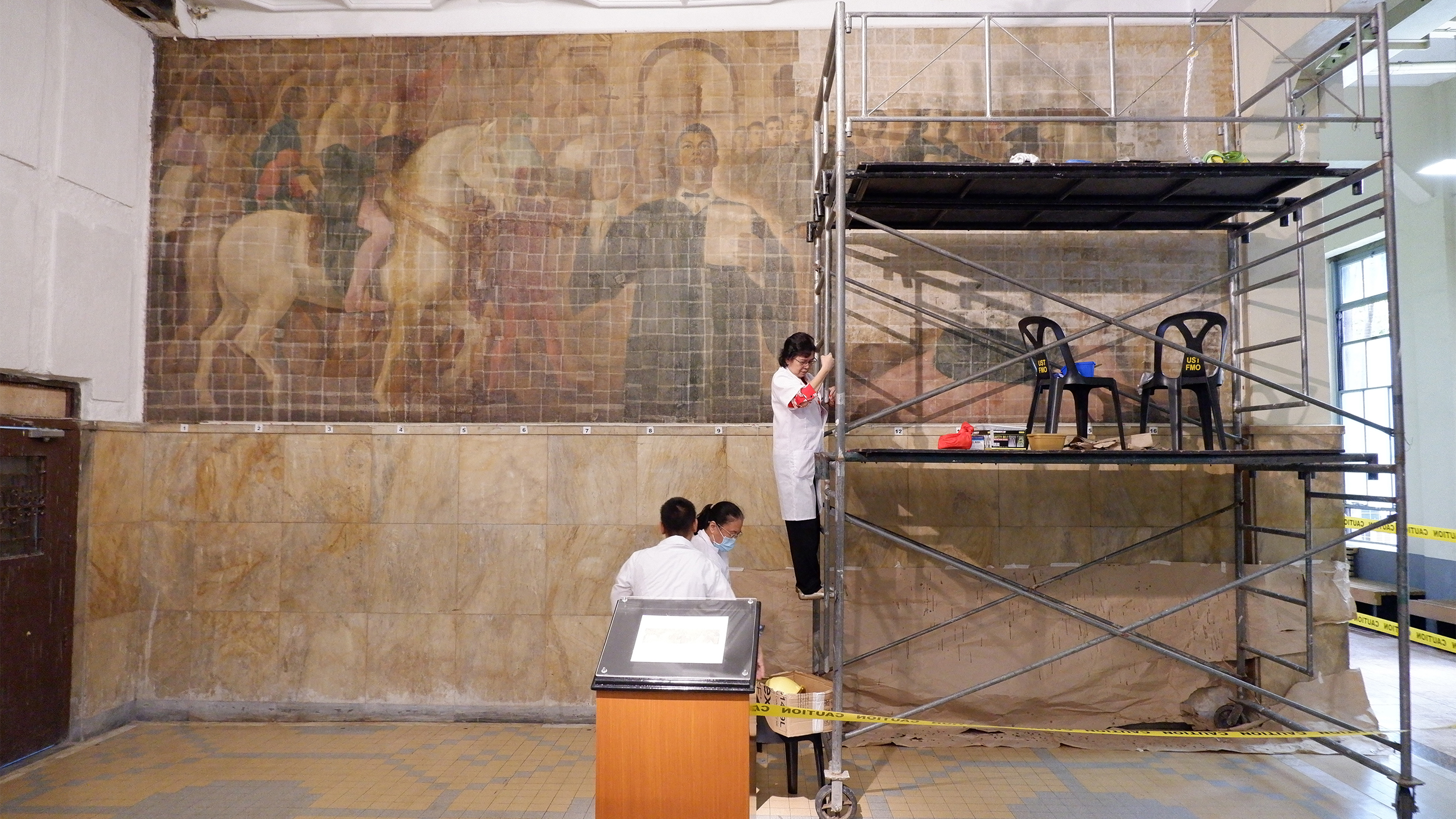
‘The less you touch, the better’
Before restoration, each mural underwent a process called “facing,” where five-inch squares of RK0 Japanese tissue with fish glue were pasted on its surface to avoid flaking paint.
The conservation team then examined the artwork’s composition, including its canvas, primer (or undercoat) and pigment.
To identify the pigments and varnish, Reyes’s team used a special technique called Energy-dispersive X-ray spectrometry, allowing chemists to determine their composition. Possible materials used for the mural include linseed oil, the most popular form of oil medium, and tempera, a mixture of pigments and egg yolk.
Since the painting is antique, they figured the canvas was organic since synthetic fibers only became available in the 1960s.
Reyes also needed to know the level of fungi and bacteria present, as both elements could cause structural damage to the artwork if left untreated.
“If it is mold-infested, if it is insect-infested, we take photos,” she explained. “And if insects are present, like termites or wood-boring beetles, we contact an entomologist who is in charge of the identification of insects and the microbiological department for the identification of microorganisms.”
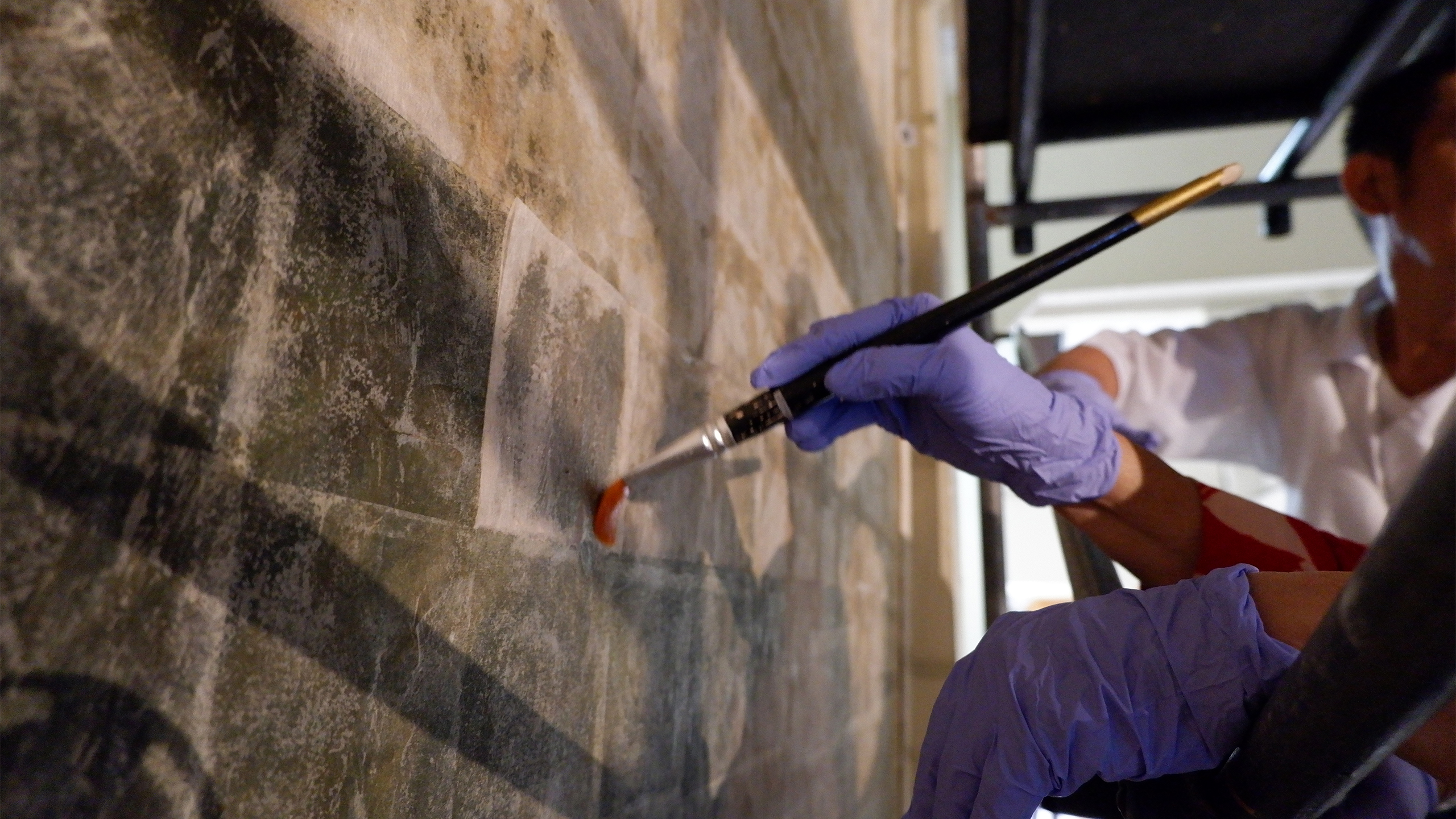
Overall, the team is guided by the three principles of conservation: minimalism, reversibility and compatible stability.
Minimalism refers to the guiding principle that less interaction with the painting is better. Reversibility pertains to the ability to remove an element added during conservation. And compatible stability means any chemical added must be compatible with the artwork’s original composition.
“The important thing is, after conservation, we do not alter, so the integrity is preserved,” Reyes said.
What the group aims, the conservator added, is to simply remove any existing molds in the mural and enhance its color.
“The integrity is still there,” she said. S.S.J. Aldovino


